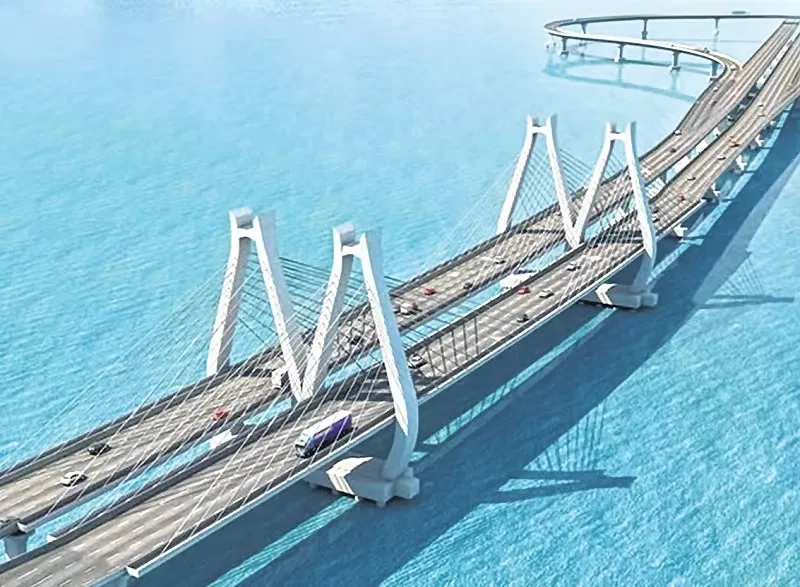Versova-Virar Sea Link: Mumbai’s Ambitious Stride Towards Infrastructural transformation to alleviate traffic in Mumbai after MTHL

Versova-Virar Sea Link: Mumbai's Ambitious Stride Towards Infrastructural transformation to alleviate traffic in Mumbai after MTHL
Mumbai, the dynamic metropolis on India’s western coast, is poised for a significant infrastructural leap with the upcoming Versova-Virar Sea Link (VVSL). This ambitious project, estimated at INR 63,426 crore, will stretch 43 kilometers along Mumbai’s western shore, emerging as an eight-lane elevated road. Beyond its sheer engineering marvel, the VVSL promises to alleviate traffic congestion on vital routes like the Western Express Highway, S V Road, and Link Road.
Taking charge of this monumental project is the Mumbai Metropolitan Region Development Authority (MMRDA), ensuring seamless integration with other key infrastructural developments in the city. Backed by international attention and support, notably from the Japanese government, the VVSL symbolizes not just Mumbai’s progress but also global cooperation in infrastructural advancement.
More than a connectivity solution, the VVSL exemplifies Mumbai’s unwavering commitment to enhancing its urban landscape. This sea link is set to redefine Mumbai’s coastline while offering a futuristic solution to its traffic challenges, positioning itself as one of the top three longest sea bridges globally.
Project Details:
Length and Lanes: The VVSL is a 43-kilometer-long elevated roadway designed as an 8-lane thoroughfare, connecting Versova to Virar. Key connectors at Charkop, Uttan, Vasai, and Virar enhance its connectivity potential.
Cost and Funding: With an estimated cost of INR 63,426 crore, funding is expected from various channels, including significant participation from the Japan International Cooperation Agency (JICA).
Technical Specifications:
The VVSL is not merely a megastructure; it represents a modern engineering marvel. Extensive use of steel and cement, environmental considerations, and a design attuned to coastal sensitivities underline its significance. The Mumbai Metropolitan Region Development Authority (MMRDA) ensures meticulous execution.
Benefits for Commuters:
Reduced Traffic Congestion: The VVSL is poised to significantly reduce congestion on Mumbai’s key routes, transforming the three-hour drive from Nariman Point to Virar into just an hour.
Enhanced Connectivity: Linking Virar and surrounding areas more directly to Mumbai’s heart, the VVSL is expected to spur economic and social development.
Public Transport Integration: Plans include integrating the sea link with public transport networks, contributing to improved air quality and reduced pollution levels.
Future Outlook:
The VVSL, progressing steadily through technical evaluations, is a testament to Mumbai’s infrastructural ambition. Once completed, it will not only enhance Mumbai’s connectivity but also stand as a global infrastructure marvel. The project’s phased approach, financial model, and integration with public transport signal a comprehensive solution to Mumbai’s traffic challenges.
The Versova-Virar Sea Link is not just about connecting two points; it symbolizes Mumbai’s commitment to progress, sustainability, and an improved quality of life.
As this infrastructural masterpiece unfolds, Mumbai reaffirms its status as a city seamlessly blending history with contemporary marvels, promising a future where mobility is seamless and development is inclusive.









